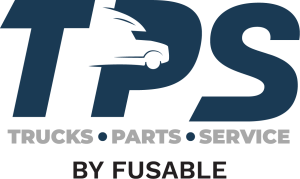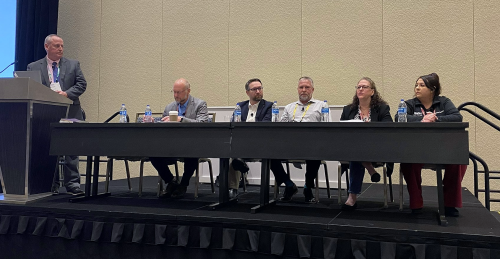

- Edit Column
Lucas Deal (TPS Cheif Editor)
You know how hard finding new employees can be. So why aren’t you taking time to develop a plan to make the process any easier?
That was one of the main themes posed to the audience during a recruitment best practice panel discussion Wednesday at the HDA Truck Pride Annual Meeting in National Harbor, Md.
Led by HDA Truck Pride Education Manager Martin Redilla, Wednesday’s panel opened with the acknowledgement that there’s no perfect solution to fully eliminate the headaches of hiring. Whether you’re doing it yourself, outsourcing the work to a third-party or following a structured process, some jobs are always going to be harder to fill than others. And some candidates, even ones that look great on paper or in an interview, will sometimes not work out.
But while the panelists recognized those realities, they also noted those issues are no excuse for distributors to continue failing to improve their recruitment and hiring tactics. There is a direct correlation between the effort companies put into their hiring and onboarding processes and their workplace culture, retention rates and reputation. The more willing you are to invest in hiring on the front end, the better candidates and hires you’ll make on the back end.
Jay Goninen, co-founder and president at WrenchWay, says one common issue he sees across heavy-duty operations when filling positions is rushing through the process. A job opens and a company throws up a job listing with hopes of hiring the first decent candidate that comes along.
“A lot of times when we can’t find candidates with a good work ethic, it puts us in a position of desperation,” he says. “When we take that approach, we’re not being proactive with our strategies and then we don’t understand why we can’t build a culture.”
Goninen believes its actually best for companies to start at their culture and work backward. He says every business needs to know what it wants its culture to be, and convey that messaging internally and into the job market. He uses reputation as an example. Goninen says distributors and service shops are often very aware of their reputation among customers but are rarely as informed as how they are perceived among potential hires. That’s a problem, he says, because its creates a disconnect between how a company views an open position and how a candidate for that position views the greater operation. “You have to know what people think of you,” he says.
Blain Johnson, president at T3 Recruiters, agrees.
Johnson says one of the biggest shifts in the job market since the pandemic has been how candidates view open positions. He says for entry-level roles, specifically, job seekers may be submitting dozens of applications or more every time they look for a job. In a labor market that crowded, Johnson says candidates have all the power. Companies eager to fill a position need to make themselves stand out just as much as applicants they’re considering.
“Companies don’t get to say, ‘Why do you want to work for us?’ anymore,” he says. “The mind shift needs to be ‘What can we do to be a good employer for you?’”
On that note, UNOH Diesel and Ag Instructor Lauren Reinhold says it’s time service providers learn how to be flexible.
Today’s young people aren’t interested in slotting into a rigid workplace with little elasticity or potential for advancement. She says young people will work hard if you can offer them the work-life balance, compensation and continued education they desire.
Without that, she says you can’t expect them to hang around very long.
“If you don’t provide that, they will burnout, panic and leave,” she says.
But the good news is building strong recruitment and hiring practices into an aftermarket operation can be done. Representatives from Vander Haag’s and Blaine Brothers were on Wednesday’s panel as proof.
Susan Gard, Blaine Brothers’ vice president of human resources, says her company has invested substantially in its recruitment, interviewing and onboarding practices to maximize the company’s success rate in both filling open positions and retaining key people.
Among the company’s hiring resources are a full-time recruitment manager to take the burden of job application development and placement off managers, pre-screening of candidates by HR before interviews, interview training for managers, offer letter templates, 30-, 60- and 90-day onboarding practices and more. Gard says these investments provide tangible benefits to applicants, new hires and existing staff alike, ensuring everyone added to the Blaine Brothers’ family assimilates as well as possible.
And the latter cannot be overlooked, adds Jeff Baker, parts department manager at Vander Haag’s.
“People are the most important ingredient to growing your business,” Baker says, and companies that invest intelligently in their people are the ones most likely to grow. He adds, “If you hire for talent, you can train for skill.”

